Currency Notes – Paperbacks – Finance & Development, June 2015
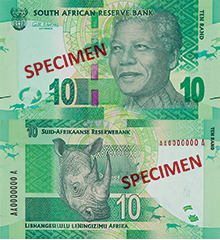
Finance and Development, June 2015, vol. 52, no. 2
South Africa pays tribute to the country’s diversity in its latest currency design

Countries with more than one official language often use public signs as an affirmation of the status and use of national mother tongues. Thus, traffic signs, official publications, national mottos or coats of arms, postage stamps, airplane decals and other prominent platforms become vehicles for displaying and familiarizing two or three official languages.
Test 11.
That was the task facing newly democratic South Africa in 1994, when the self-styled “rainbow nation” succeeded the apartheid pariah state of the previous half-century. Among the many novel features of the new nation was a wide expansion in the number of official languages. To foster a new sense of inclusive nationhood among the country’s diverse ethnicities, the two official languages that prevailed before 1994 became the 11 of the new South Africa.
We want to reach all South Africans through this communication campaign. It is our responsibility as the Reserve Bank to protect the credibility of the South African currency. This can only be achieved by ensuring that the public is very aware of their money and its distinctive characteristics. >
— Organize tableshead of the South African Reserve Bank
Group Strategy and Communication Department
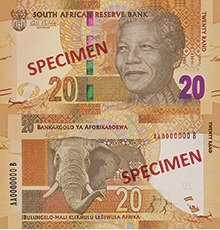
Ndebele, Northern Sotho, Sotho, Swazi, Tsonga, Tswana, Venda, Xhosa and Zulu.
Nation builders looking for public platforms for 11 official languages can forget almost all the usual resources available for two or three mother tongues. But a display medium still presents itself as uniquely qualified to promote 11 languages in a diverse nation: in daily use by almost all citizens, easily recognizable by its color and design, highly portable and storable, and also a status symbol: no. the postage stamp. —which is falling into digital disuse—but the ticket.
Four functions
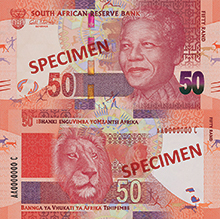
The latest reissue of South Africa’s top five banknotes, officially launched in November 2012, serves four main functions, according to the South African Reserve Bank, which produced the banknotes.
● Commemoration of former president Nelson Mandela, who died in 2013: the appearance of Mandela on the obverse of the five new banknotes is a further formal recognition of his status as father of the new nation;
● Improve the security features of national currency: central banks around the world must stay one step ahead of the increasingly sophisticated scanners and printers available to counterfeiters;
● Promote the “big five” big game species (rhinoceros, elephant, lion, buffalo and leopard) in a country where awareness of wildlife conservation is increasing and safari parks are a major tourist attraction; and
● Display each of the country’s 11 official languages, to encourage inclusion and cohesion between ethnicities that were once encouraged to develop separately.>
Another novel feature of the latest launch is the use of websites and social media to promote awareness and acceptance of the new banknotes. South Africa is an emerging economy undergoing rapid urbanization, but also with an informal sector that operates outside the formal structure of regulated, tax-paying trade and employment. Therefore, information about sudden changes in currency design may not easily reach these informal actors.
Monetary economy
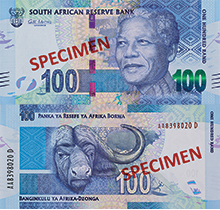
Since the informal sector is largely unbanked and therefore almost exclusively cash-based, widespread recognition and acceptance of coins and banknotes is crucial for its effective functioning. So the Reserve Bank announced that it would synchronize the launch of the new banknotes with national tours, taking samples of the new banknotes to “retail shopping centres, transport hubs and pension payment points in urban and rural areas in all nine provinces”. of the country.”
Online and social media promotions detailed the appearance of the new cash and also urged its new users for a hands-on experience: “The public is encouraged to continue LOOKING, FEELING and TILT the bills to check for a combination of features of security. ”states the central bank website.
two by two
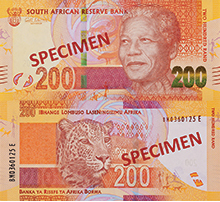
The 11 official languages are distributed among the five new banknotes with English on the front of all banknotes and the other official languages in pairs on the back of each denomination.
Information about the new banknotes has been published on a variety of communication platforms, including radio, television, billboards, banners, the Reserve Bank website and print and online media, which also include social media and sites for mobile devices. ■
